


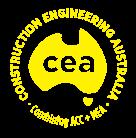

CONSTRUCTION CIVIL WORKS CIVIL ENGINEERING V8.04 CONCRETE INSTITUTE of AU STRALIA DEC 2022/JAN 2023 PRINT POST APPROVED - 100001889 PROUDLY SUPPORTED BY PROUD MEDIA PARTNER ACRS SUSTAINABLE STEEL & PRODUCT CERTIFICATION
Innovative design relies on new ideas. Unlike any other, Fielders ARAMAX® Roof and Wall System can help you to bring new ideas to life. ARAMAX® is bigger, bolder and deeper than conventional steel cladding profiles. Delivering a distinct, signature aesthetic to your next project, ARAMAX® is the visual and functional choice for architects, designers, engineers and builders alike.
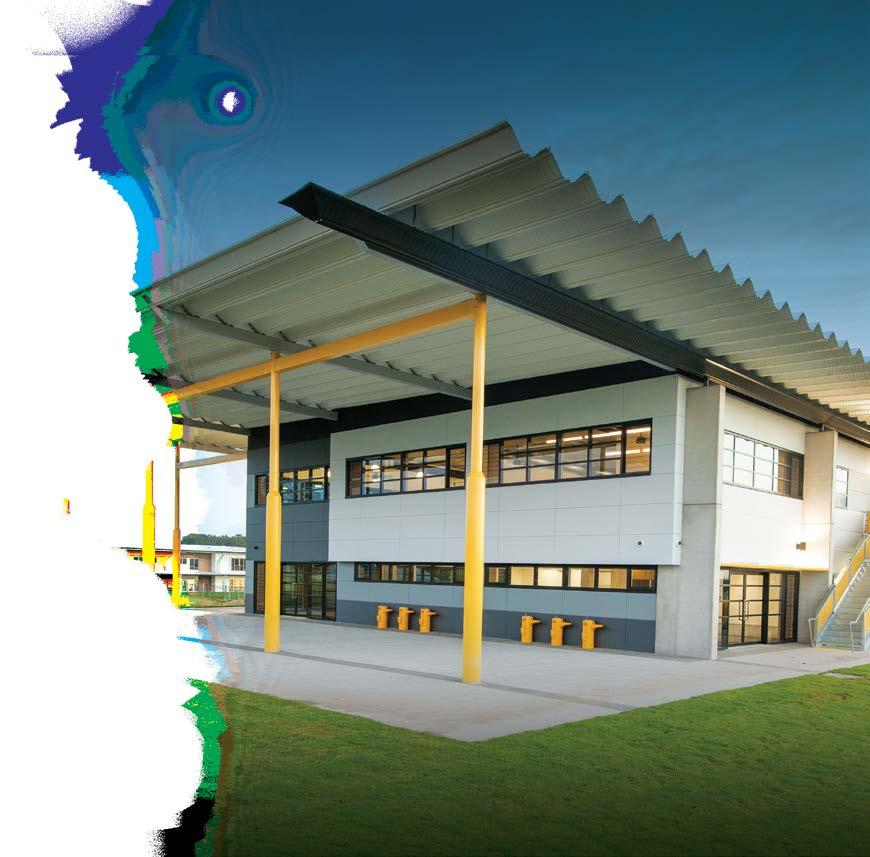
Fielders® and ® product names are registered trademarks of BlueScope Steel Limited and ™ product names are trademarks of BlueScope Steel Limited. © 2022 BlueScope Steel Limited. ABN 16 000 011 058. All rights reserved. FIE0404/1222
fielders.com.au
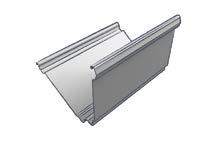
You can
with
do it
Fielders ARAMAX® If you can imagine it.
Published by:
Editorial and Publishing
Consultants Pty Ltd
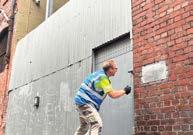

ABN 85 007 693 138
PO Box 510, Broadford Victoria 3658 Australia
Phone: 1300 EPC GROUP (1300 372 476) Int’l: +61 3 5784 2210
www.epcgroup.com

Publisher and Managing Editor
Anthony T Schmidt
Phone: 1300 EPCGROUP (1300 372 476) Mobile: 0414 788 900

Email: ats@epcgroup.com
Business Development Manager
Lawrence Whiter Mobile: 0418 543 821
Email: lawrencewhiter@bigpond.com
National Advertising Sales
Phone: 1300 EPCGROUP (1300 372 476) Int'l: +61 3 5784 2210
Email: ats@epcgroup.com

Advertising Sales - SA
Jodie Gaffney - AmAgo Mobile: 0439 749 993
Email: jodie@amago.com.au
Advertising Sales - WA
Licia Salomone - OKeeffe Media Mobile: 0412 080 600
Email: licia@okm.com.au
Graphic Design
Annette Epifanidis Mobile: 0416 087 412
save for those conditions and warranties which must be implied under the laws of any State of Australia or the provisions of Division 2 of Part V of the Trade Practices Act 1974 and any statutory modification or re-enactment thereof. To the extent permitted by law, the Publisher will not be liable for any damages including special, exemplary, punitive or consequential damages (including but not limited to economic loss or loss of profit or revenue or loss of opportunity) or indirect loss or damage of any kind arising in contract, tort or otherwise, even if advised of the possibility of such loss of profits or damages. While we use our best endeavours to ensure accuracy of the materials we create, to the extent permitted by law, the Publisher excludes all liability for loss resulting from any inaccuracies or false or misleading statements that may appear in this publication.
About the Cover
ACRS' and CARES' Sustainable Constructional Steels Certification Scheme (SCS Scheme) has been recognised by the Green Building Council of Australia under its Responsible Products Framework. The Framework is used by the GBCA to recognise initiatives that a product or manufacturer can comply with for the purposes of contributing to a Green Star certification.
Turn to Page 10 for the full story.

contents DEC 2022/JAN 2023 Volume 8 Number 4
Registered by Australia Post Publication No. 100001889 ISSN 2204-7247 TERMS AND CONDITIONS This publication is published by Editorial and Publishing Consultants Pty Ltd (the “Publisher”). Materials in this publication have been created by a variety of different entities and, to the extent permitted by law, the Publisher accepts no liability for materials created by others. All materials should be considered protected by Australian and international intellectual property laws. Unless you are authorised by law or the copyright owner to do so, you may not copy any of the materials. The mention of a product or service, person or company
this publication does not indicate the Publisher’s endorsement.
views expressed in this publication do not necessarily represent the opinion of the Publisher, its agents, company officers or employ-
Any use of the information contained in this publication is at the
risk of the person using that information. The user should make independent enquiries as to the accuracy of the information before relying on that information. All express or implied terms, conditions, warranties, statements, assurances and representations in relation
Publisher, its publications and its services are expressly excluded
Copyright ©2023 - EPC Media Group 4 24 40 2 Editorial 4 Industry News 8 Case Study: Fielders Aramax 10 Cover Feature: ACRS' SCS Scheme Recognised by GBCA 16 Performance Flooring 18 Equipment Focus 22 Structural Steel Design 24 National Precast News 30 Special Report: Aaron Hudson Transformative Outcomes 34 Health Matters 38 Construction Technology 40 Product Brief 18
in
The
ees.
sole
to the
REINVIGORATING THE REGIONS
FINDING A BALANCE BETWEEN DEVELOPMENT AND HERITAGE PROTECTION
Change is difficult... And the longer something has been in existence or remained the same, the more difficult it is to change.
Granted, some people find change more difficult than others, but for most, preserving the ‘status quo’ is much easier than ‘rocking the boat’. This is particularly true when it comes to new construction and development.
Notwithstanding the issues associated with new construction in environmentally and/or culturally sensitive areas such as foreshores, parklands and other greenfield sites, resistance to new construction and development - or for that matter, change in general - is also a major challenge facing many of the smaller, formally semi-rural communities on the fringes of our major capital cities.
Whilst these communities often have a long and rich history as towns, villages or hamlets in their own right, for many, the ‘glory days’ have well and truly passed.
Indeed, for many of these communities, their location - both in relation to busy transport arterials servicing the nearby major cities and the ever-expanding outer suburbs of these cities - has rendered them little more than a mere shadow of their former existence.
High levels of passing traffic (including a high percentage of heavy vehicles)
can result in significant damage to road infrastructure, while the ever-encroaching outer suburbs, which often incorporate major shopping centres and recreation facilities, can, and do, have disastrous consequences for local traders in many of these towns.
The result: money being earned by many of the people in the town never gets spent in the town; the local economy collapses; shops and other facilities close; local unemployment rises; buildings fall into disrepair; and the former township starts to resemble a ghost town.

Unfortunately, more often than not, this is when the really serious issues arise, viz: a division between those who wish to build and develop/redevelop the town and those who are completely opposed to the ideapreferring instead to keep the town as a “... nice, quiet, little country town like it used to be”.
This may read as a sightly ‘glib’ statement, but believe me, it is not intended to be.
I have seen disagreements such as these divide regions, towns and even families. Worse still, I have seen first-hand a number of seemingly innocuous development plans degenerate into legal wrangles involving Heritage Protection Orders, appeals, lawsuits and counter-suits for losses and perhaps worse of all, the permanent loss of literally tens of millions of dollars of investment for some communities.
Now, I’m not saying that we should declare ‘open season’ on any and all buildings and structures for the sake of a dollar – far from it. But I am saying that we cannot continue the way things are.
Put simply, the viability and longevity of these towns and regions must not be allowed to suffer at the hands of outdated planning practices or, dare I say, a utopian view of historic country villages that remain unaffected by surrounding development and an everchanging world. After all, it is impossible for any location to exist in isolation.
Remaining stagnant (in terms of development or growth) is, in all seriousness, a certain death sentence for any town – no matter how resilient.
While I don’t profess to have all the answers or, for that matter, a ‘magic, one size fits all solution’, I do believe that these are issues that need to be addressed with the utmost urgency. The time has come for us to all work together seriously and in good faith to find a solution to this most serious of issues - lest we find our major capitals surrounded by the dilapidated remains of ‘former’ townships.
Anthony T Schmidt Managing Editor
Dear Readers,
2 Construction Engineering Australia • Dec 2022/Jan 2023 EDITORS COLUMN

























2023 ANNUAL SPONSORS OF ETIA Contact us: (02) 9899 7447 | registrations@etia.net.au | www.etia.net.au | Connect with us: Over 40 Design and Construction Workshops O erred PROFESSIONAL DEVELOPMENT | SMALL GROUPS | LIVE STREAM | FACE-TO-FACE 2023 UPCOMING COURSES
Uno ETIA Director VIEW OUR COURSES 1. Accounting & Management for Engineers Workshop 28 February 2023 ZOOM 2. Structural Steel Design Workshop 1 + 2 March 2023 F2F SYD 3. Glass & Aluminium Façade Design Workshop 6 + 7March 2023 F2F SYD 4. Shallow Foundations Design Workshop 9 March 2023 ZOOM 5. Cold-Formed Steel Design Workshop 14 March 2023 ZOOM 6. Residential Slabs & Footings Design Workshop 15 + 16 March 2023 F2F SYD 7. Metallurgy Materials Workshop 21 March 2023 ZOOM 8. Reinforced Concrete Design Workshop: Module 1 22 + 23 March 2023 F2F SYD 9. Blast, Fire & Progressive Collapse Workshop 28 March 2023 ZOOM 10. Pile Foundations Design Geotechnical Workshop 29 + 30 March 2023 F2F SYD 11. Prestressed Concrete Design Workshop 4 + 5 April 2023 ZOOM
Paul
*F2F SYD (Face-to-Face-Sydney)
Joanne Bianca Lisa
MELBOURNE CITY COUNCIL STEPPING UP TO SCRUB THE CITY CLEAN
The City of Melbourne did more cleaning in 2022 than ever before, removing the equivalent of nearly eight MCGs of graffiti in the past year.
Council’s Rapid Response Clean Team removed a record 150,000m2 of graffiti across Melbourne in 2022 – a 121 per cent increase on the previous 12 months. More than 87,000m2 of graffiti was proactively cleaned, and another 63,000m² was removed following reports from the public.

Targeted operations saw the removal of illegal tagging on bridges along the Yarra River – Birrarung, and more than 3200m2 of graffiti was cleaned from buildings and surfaces above 3 metres.
Council has also stepped up its efforts to remove dumped rubbish across the municipality, collecting more than 4,500 tonnes in the past 12 months – and an additional 100 tonnes of discarded mattresses.
More than 900 infringement notices and fines were handed out to those caught littering or illegally dumping rubbish in 2022.
City residents, workers and visitors continue to play an important role in reporting graffiti and rubbish across the city using Council’s QR code reporting system. Public reports of graffiti and street cleaning were up 60 per cent last year, compared to 2021. The reporting system has ensured Council can double down on its efforts and allocate resources more effectively across the municipality.
Around 30 vandalised QR codes were removed from Council bins during January, however Council will continue to work with Victoria Police to identify those replacing QR stickers. Council will also continue to expand the Rapid Response Clean Team to fast-track graffiti removal across the city, thanks to a record $1.4 million investment in last year’s Budget.
“We’re stepping up to scrub the city clean – making sure Melbourne is sparkling for city residents, workers and visitors every day of the year,” said Lord Mayor Sally Capp.
“Our Rapid Response Clean Team has
proactively removed tens of thousands of square metres of graffiti from across the city – the large majority on privately owned property.”
“We’ll continue to target hotspots and work closely with Victoria Police to crack down on repeat offenders who are leaving a scourge on our city,” the Lord Mayor added. “This year we’ll start implementing more anti-vandalism features, such as green walls and murals.”
These comments were echoed by City Transport, Infrastructure and Operations deputy portfolio lead Councillor Davydd Griffiths, who added: “We’re scrubbing the city clean like never before – so everyone can enjoy our city’s public spaces throughout summer and the school holidays.”
“Removing record amounts of graffiti is a credit to our Rapid Response Clean Team, who are working to ensure our iconic streets and laneways are as inviting as our world-renowned open spaces,” Councillor Griffiths concluded.
4 Construction Engineering Australia • Dec 2022/Jan 2023 INDUSTRY NEWS



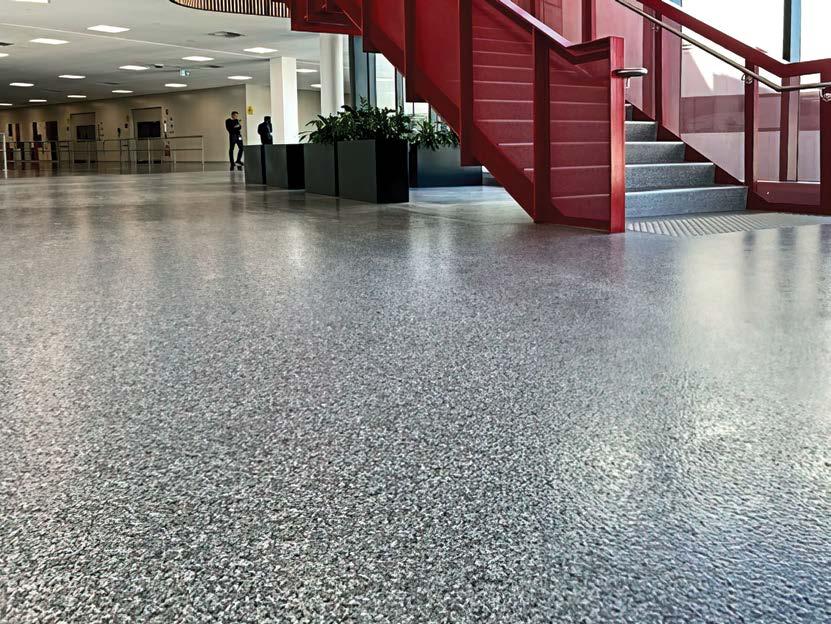
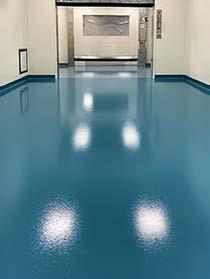


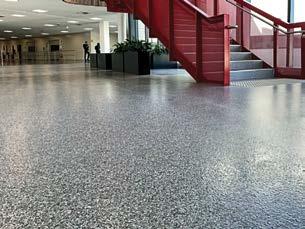

80 Industrial Drive, Braeside VIC 3195 | info@ascoat.com.au www.ascoat.com.au | Tel: +61 3 9587 7433 From fast, cost-effective concrete sealing solutions, through to high-build epoxy, self-levelled, chemical, temperature and static-resistant seamless installations, ASCOAT has the solution. Ascoat_Ad03_210x148_PRESS.pdf 1 11/11/22 12:37 pm INDUSTRY NEWS
service and representation for the public IPWEAQ-NT has supported the state’s public works professionals for 50 years by
CHARLES DARWIN UNIVERSITY HELPING TO BUILD INDEPENDENT SKILLS ACROSS FIRST NATION JAWOYN COMMUNITIES
The ancient art of welding learned at Charles Darwin University (CDU) is helping to build the independent skills capacity of First Nations Jawoyn communities on country spread across 50,000 square kilometres of Northern Australia.
Technical skills in welding have important applications across this vast, remote tract of Jawoyn country, which extends north-west from Katherine to Pine Creek, south to Mataranka, and northeast to Bulman, including southern parts of Kakadu National Park and Arnhem Land. There, new knowledge and skills that First Nations men have drawn from welding training at CDU’s Katherine Rural Campus is being put to work by the land’s traditional owners in nine Jawoyn communities or clan groups.
These are the Barunga (Bamyili), Beswick (Wugularr), Jodetluk (Gorge Camp), Kalano, Kybrook, Manyallaluk (Eva Valley), Rockhole, Werenbun and Banatjarl (King Valley) communities, with a total population of 800 making up the traditional Jawoyn Nation.
Delivering the Welding Short Course, CDU Agriculture and Rural Operations Lecturer, Jonny McGannon said the expertise
imparted to the First Nations men, who are all Jawoyn Association Aboriginal Corporation employees, has wide-ranging benefits.
“The nationally-accredited welding training has helped to build the confidence, skills and workplace credentials of the Aboriginal men,” Mr McGannon said.
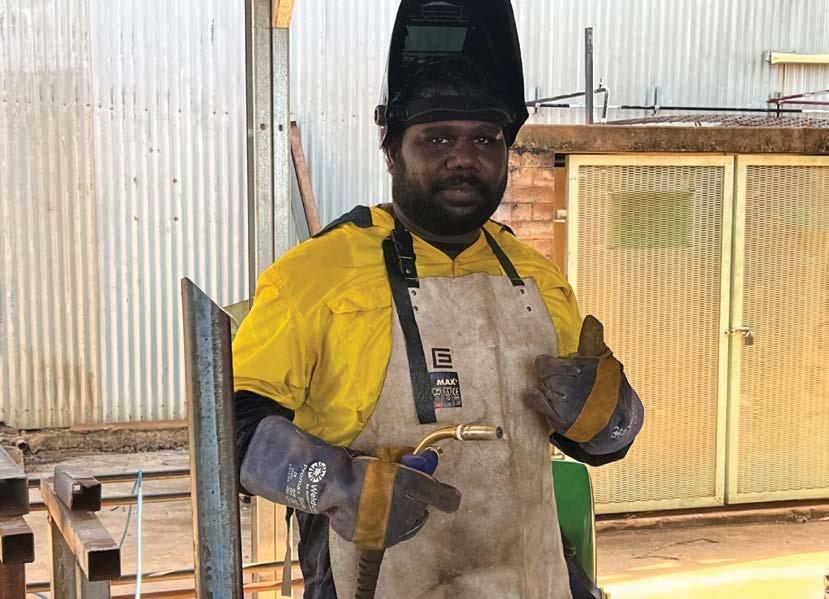
“But the course benefits – technical knowledge and tangible skills - will also flow from the individual course participants to the wider community.
“The learned techniques for fusing metal together can be used in Jawoyn communities to advance existing industries and, potentially, foster new industries, providing alternative sources of income.”
Jawoyn Association Aboriginal Corporation Group Human Resources Manager Amy Murphy said the training has benefits for those participating and communities. These benefits range from learning on country and traditional land management to residential construction and professional development.
CDU course participant Samson Andrews plans to teach his new welding skills to First Nations students as part of the Learning on Country program, in
partnership with Aboriginal ranger groups and 15 schools in remote communities, including two Jawoyn schools.
“It is this combination of curriculum and culture that will support remote Aboriginal students to walk strong in two worlds.” Miss Murphy said.
“For instance, Samson will teach Jawoyn students how to construct metal cages for feral animal management through the Learning on Country program.”
First Nations employees at Jawoyn Contracting will also apply their welding expertise to residential construction and maintenance in three communities, and rangers will use their new skills to construct and maintain fencing, gates, ramps, walkways and signs, she said.
The training saw the Jawoyn men put their welding skills to the test building a ‘Purple Bench’ in recognition of the movement that aims to break the cycle of domestic violence facing women.
The new bench for the University’s Katherine campus was designed by CDU Rural Skills and Mechanics Lecturer Lee Hunt, who co-delivered the welding course with Mr McGannon.
6 Construction Engineering Australia • Dec 2022/Jan 2023 INDUSTRY NEWS
Welding expertise learned at Charles Darwin University’s Katherine Rural Campus is helping to build the independent skills capacity of First Nation Jawoyn communities in remote Northern Australia.
BUILDING APPROVALS REFLECT ECONOMIC PRESSURES IN INDUSTRY
The November quarter building approval numbers from the ABS reflect the latest string of economic pressures faced by the building and construction industry, according to Master Builders Australia CEO Denita Wawn.
“The total number of approvals fell by 9.0 per cent during November, and are now 15.1 per cent lower than a year ago,” said Ms Wawn.
“The latest building approvals data is concerning, and it’s clear that we are facing significant challenges which need to be addressed head-on if we want to weather the storm and see a sustainable recovery.
“For detached houses, there was a 2.5 per cent decline during the month and a 22.7 per cent drop for approvals of highdensity homes.
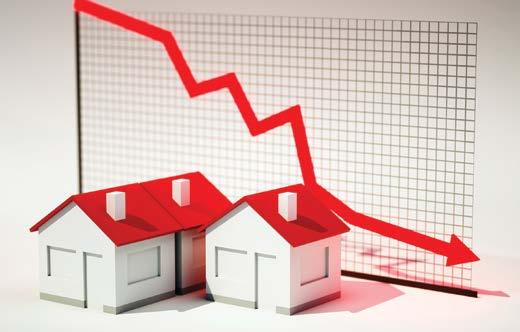
“There have been signs that detached house building approvals had stabilised, but recent months indicate that they are moving downwards.
“Higher density home building approvals, which are particularly sensitive to interest rate movements, had shown momentum during 2021, however, this is now on the way down.
“A number of factors are making it difficult for new home building, including rising interest rates coupled with labour and material shortages.
“We must not be complacent in addressing some of the systemic challenges on the supply-side which continue to ripple through the economy.
“Builders continue to advocate for an increase to the migration cap and changes to the migration system that make Australia a more attractive place to live and work, and complementing this with improvements to domestic vocational education and training,” Ms Wawn said.

Construction Engineering Australia • Dec 2022/Jan 2023 7 INDUSTRY NEWS
Fielders ARAMAX®
delivers
multiple
design solutions
at St Bede’s Catholic College
The level of design consideration afforded to educational buildings has grown immensely in recent years, with holistic philosophies now coming into play that aim to deliver flexible, yet nurturing and attractive student environments that better encourage learning and progressive teaching methods.
A prime example of this modern educational architecture can be seen at St Bede’s Catholic College, a new school based in Chisholm, in the city of Maitland, around 23 kilometres from Newcastle. Key infrastructure on the school grounds includes a recently developed open-learning cluster that does away with the traditional classroom settings of years gone.
Stages one and two of the development have been completed and are in use, with construction of the remaining two stages to begin in the coming months. The overall design comprises four large pillars of buildings that breech across the contours of the site, with an internal circulation spine or ‘peregrine trail’ linking the four buildings, while organically adhering to the existing contours of the site.
At the heart of the design is a desire to fulfil a pedagogy-based teaching method. The project-specific pedagogical approach is a futurefocused learning model that empowers students to take ownership of their learning by providing an environment that is flexible, innovative and challenging, equipping them with the skills and capabilities to thrive in a rapidly changing world.
Designed by leading local architectural firm, SHAC, the St Bede’s development features extensive use of Fielders ARAMAX® both for roofing as well as to create a bespoke screen wall.

According to SHAC Director, Architect and Project Manager, Elizabeth Brown, ARAMAX® provided several solutions to both architectural and construction challenges on site.
“There are a few reasons why we chose to specify ARAMAX® for this project,” Elizabeth said.
“The long-spanning capabilities of this profile allowed us to incorporate generous roof overhangs to provide protection from the weather (rain and sun) on the walkways below as well as over windows.
“The strength of ARAMAX® also means there’s less reliance on secondary structure, which reduces construction costs. There are also no concerns about fixing solar panels to the ARAMAX® roof – we know they’re more than strong enough.
“From an installation perspective, it’s a profile that’s efficient to install, so we can get large sections of the building protected from the rain very quickly.”
In line with the site’s use as a progressive education centre, so too was SHAC’s ability to apply some clever and forward-thinking architectural ideas using ARAMAX®.
One such technique involved creating a twin-layered roof structure which was packed with insulation and left exposed – this provided the space with a clean and simple finish, and aligned it with other design aspects of the site, such as exposed services and the use of raw materials.
Another intelligent application of ARAMAX® was as a sculptured screen wall that was developed to shield students and teachers from the harsh Western sun when using the trail between the buildings. Of course, a
8 Construction Engineering Australia • Dec 2022/Jan 2023 CASE STUDY
certain level of sunlight would need to permeate the screen wall to provide visibility. This challenge was addressed by perforating the cladding.
“The structural integrity of ARAMAX® again came into play with the design of the screen wall,” Elizabeth said.

“It spans from slab edge to slab edge between levels allowing for uncomplicated fixing, its use in the western screen ties together the trail aesthetically with the building forms. It creates a strong design statement for the building and it’s also non-combustible, which satisfies the compliance requirements of the building and egress paths.

“Additionally, the profile was suitable to perforate, and after considering several patterns, and reviews by wind engineers, a ‘noughts and crosses’ pattern was ultimately selected after passing wind noise testing.


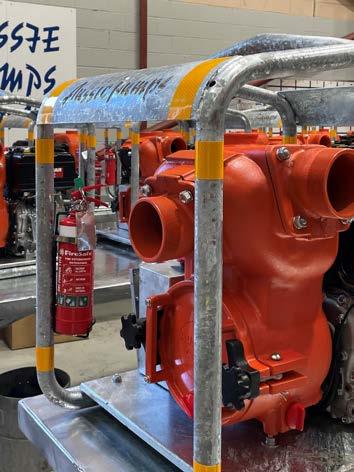
“Along with all the functionality that ARAMAX® provided as a screen wall, we were extremely pleased to use it from an aesthetic standpoint, because it allowed consistency of materials and helped anchor the overall design,” Elizabeth explained.
SHAC is a multi-disciplinary practice based out of Newcastle, and although they specialise in education projects, also work in commercial, retail, health, infrastructure, and residential sectors. Elizabeth noted that one of the other great things about this project was that it was a full team effort in the office and that the client and consultant team were all willing to contribute to provide a world-class education building that fulfils its aim of providing the best education spaces possible for the local staff, students, parents, and community.
size of ad .... 88mm x 135 mm ü 5 year pump warranty 4" TRASH PUMP ... DIRTY WATER SPECIALIST ü Self priming to 7.6m ü Fast, easy set up ü Flows to 1,600 lpm ü 10HP Yanmar diesel 4" DIESEL TRASH PUMPS Australian Pump Industries Aussie Pumps 02 8865 3500 aussiepumps.com.au AUSSIE PRODUCTION SOARS we’reforAustralia 1300 240 337 www.enviroblast.com.au EnviroBlast Australia Mobile Media Blasting - Soda & Garnet • Specialising in Concrete preparation for Carbon Fibre application • Abrasive & Non-Abrasive Blasting • Paint, rust & contaminant removal from many substrates • Line marking removal • Graffiti removal & protection • Removal of sealers & coatings • Creation of non-slip surfaces • Compact machinery for easy access • Low media usage which means less environmental issues with reduced containments and dust • Suitable for confined space blasting Construction Engineering Australia • Dec 2022/Jan 2023 9
ACRS SUSTAINABLE STEEL CERTIFICATION SCHEME RECOGNISED BY GBCA UNDER ITS RESPONSIBLE PRODUCTS FRAMEWORK
ACRS (the Australasian Certification Authority for Reinforcing and Structural Steels), the leading independent, thirdparty steel certification authority of construction steels to Australian and New Zealand Standards, and CARES, the leading international constructional steel certification authority, have announced that their Sustainable Constructional Steels Certification Scheme (SCS) has been recognised by the Green Building Council of Australia (GBCA) under its Responsible Products Framework.
The Framework is used by the GBCA to recognise initiatives that a product or manufacturer can comply with for the purposes of contributing to a Green Star certification.
As part of the Framework, the SCS Scheme has been recognised as Best Practice across all four of the Framework’s credits. These cover building Structure; Envelope; Systems and Finishes.
With the SCS Scheme, steel producers and processors will be able to achieve
Best Practice credits towards Green Star Building compliance. They will also be able to achieve compliance by using other Schemes in combination with the SCS Scheme to achieve either ‘Good practice’ or ‘Best practice’ product criteria.
Commenting on the GBCA recognition of the SCS Scheme, Andrew Wheeler, Executive Director of ACRS, said: “We are delighted the SCS Scheme has received this recognition from the GBCA and to now be contributing towards the Green Star rating system. The SCS Scheme is an

10 Construction Engineering Australia • Dec 2022/Jan 2023 COVER FEATURE
internationally recognised, best-in-class sustainability scheme with thirteen years of experience in the steel industry.”
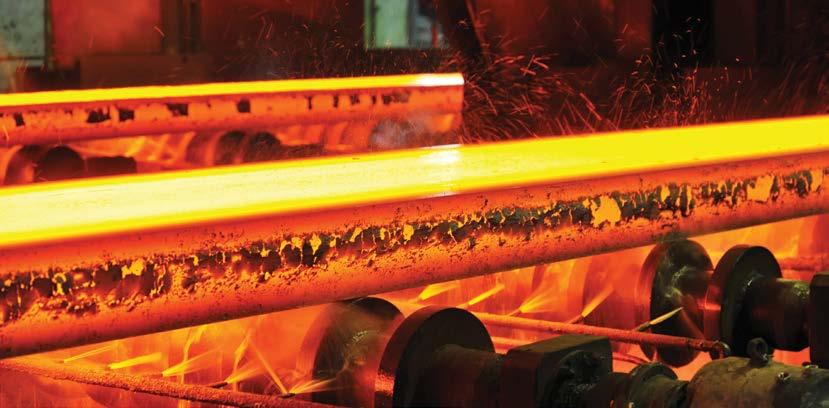
“Working closely with our partners at GBCA and our certificate holders we look forward to helping the Australian construction industry verify the steel being used as being produced using the most sustainable practices as the industry is capable of achieving and to always look for ways to improve this as we head towards net zero by 2050.”
The sentiments were echoed by Lee Brankley, CEO of CARES, who added: “Steel is a safety critical component in all major structures and responsible clients rightly seek the assurance that comes with confirmation the products they specify meet the highest standards in the sector.”
“Knowing their products also meet stretching sustainability criteria set out by highly regarded bodies such as the GBCA, is a further positive endorsement of the choices these clients are making. CARES welcomes this as an additional sign of confidence in the standards set out in the SCS Scheme,” he added.
The SCS Scheme verifies construction steels entering Australia from anywhere in the world meet the highest global environmental, social and ethical standards, using independent certification of ESG criteria and performance indicators. The SCS Scheme allows designers, specifiers and end-users to determine with

confidence the sustainability performance of the steel procured.
Australian and international steel producers are working hard to reduce their emissions. According to the IEA (International Energy Agency), around 7% of global CO2 emissions are currently generated by the steel industry1 . The SCS Scheme will help steel producers and processors measure, monitor, and improve the sustainability performance of their products and will strengthen industry efforts already underway to combat greenhouse gas emissions.
PROVIDES A CLEAR PUBLIC BENEFIT
The Scheme aligns to the UN-convened Sustainable Development Goals - ‘The Global Goals’ - and measures and monitors a comprehensive range of criteria through the global supply chain. Raw material and transport data, combined with independently verified production and life-cycle emissions data, support the development of products’ Carbon Footprint and Environmental Product Declarations. This enables accurate data, for example, the Global Warming Potential per tonne of product, to be easily accessed by designers and specifiers. On-product bar marking and digital product labelling also allows 100% traceability on all verified products from manufacture to site.
Construction Engineering Australia • Dec 2022/Jan 2023 11 COVER FEATURE
The SCS Scheme verifies construction steels entering Australia from anywhere in the world meet the highest global environmental, social and ethical standards...
SUPPORTING INTERNATIONAL TRADE AND COMMERCE
The Scheme already certifies 42 producers and suppliers in 12 countries. Products certified under the SCS Scheme are approved inputs for a range of additional international building and infrastructure rating systems, including the UK’s Building Research Establishment Environmental Assessment Method (BREEAM); the US Leadership in Energy and Environmental Design (LEED) building rating system; the Hong Kong Construction Industry Council (CIC)’s Green Product Certification (GPC) scheme and the Singapore Green Building Council’s Green Building Product Certification (SGBP) Certification Scheme.
BENEFITS FOR FIRMS SEEKING SCS CERTIFICATION
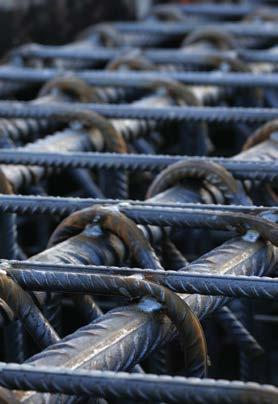
With the introduction of SCS certification, product conformity, traceability, and sustainability certification will all now be available through ACRS. Firms seeking both independent premium product and sustainability certification can now do so through one certification body. The independence and rigour that ACRS is renowned for in Australia and New Zealand will help achieve the desired quality, environmental and socially responsible outcomes across the construction industry.
For further information, please email ACRS at: info@steelcertification.com or visit the website: www.steelcertification.com

12 Construction Engineering Australia • Dec 2022/Jan 2023 COVER FEATURE
The independence and rigour that ACRS is renowned for in Australia and New Zealand will help achieve the desired quality, environmental and socially responsible outcomes across the construction industry.
Reference: 1 IEA (2020), The challenge of reaching zero emissions in heavy industry, IEA, Paris
ABOUT THE SCS CERTIFICATION SCHEME
The SCS Scheme covers the production of feedstock for further processing (e.g. billets, blooms slabs, wire rod), finished steel products (e.g. carbon steel bar/coil, stainless steel bar/ coil and structural steels), and fabricated materials (mesh, processed bar and welded fabrication).
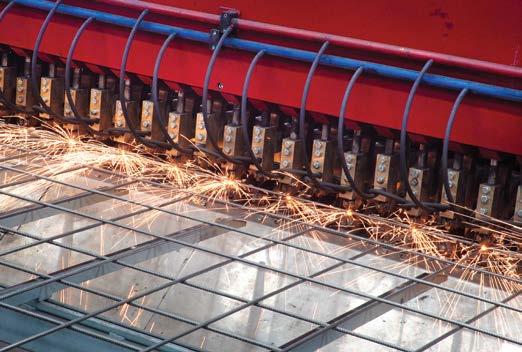
The Scheme is compatible with ACRS’ traceability provisions in ACRS “Stage 1” (Manufactured Product) and “Stage 2” (Fabricated Product) certification plus the Traceability scheme for traders and distributors. ACRS is the sole certification body in Australasia for delivery of the SCS Scheme, the internationally recognised scheme that is compatible with ACRS’ existing certification schemes and meets local market needs.
ABOUT ACRS
Founded in 2001, the Australasian Certification Authority for Reinforcing Steels (ACRS) is Australasia’s leading, not-for-profit, independent steel certification authority.

ACRS provides the most technically-rigorous, internationally-aligned, independent steel certification scheme to Australian and New Zealand Standards. It conducts audits and certificates over 100 suppliers from more than 24 countries for construction materials supplied to AS, NZS, EN and BS Standards, as well as a range of Government specifications.
ACRS certifies customer quality management systems and construction steel products to international quality standard ISO 9001: 2016 (or the identical ISO 9001:2015, or local equivalent); and Steelwork Fabrication and Erection Standard, AS/NZS 5131.

ABOUT CARES
Founded in 1983, CARES is the world’s leading independent provider of assured certification for the construction steels industry. CARES operates in over 50 countries, providing confidence in product performance and provenance to discerning public and private sector clients. The CARES digital ecosystem offers speed and transparency in ever-more complex international supply chains where safety, sustainability and product data quality are mission-critical.
Construction Engineering Australia • Dec 2022/Jan 2023 13 COVER FEATURE


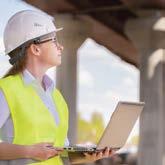
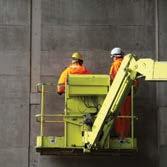





inspection data - from historical reports, photos and videos, through to current drone imaging and LiDAR data - to provide asset owners and managers with a comprehensive condition report for their assets. Our AI-based predictive analytics utilise your current and historical data to prioritise maintenance requirements and optimise your infrastructure asset management activities. T: 1300 552 878 www.dynamicinfrastructure.com.au
AI MEETS All of your asset data…
WHERE










Tested by certified engineers, Dynamic Infrastructure utilises proven, cutting-edge AI technology to provide asset owners and maintenance managers with actionable insights to save money and increase maintenance e ciency. • Identify defects before they evolve into large-scale failures • Prevent unplanned expenses & manage risk • Maximise warranty through automated tracking of repairs • Gain full field-to-o ce visibility Delta +25% since 2018 Corrosion Spall Delta +25% since 2015 Crack Delta +12% since 2017 Right at your fingertips ASSET MANAGEMENT DISCOVER MORE
SLIP-RESISTANT FLOORING

Specialist flooring solutions require specialist flooring applicators


Choosing the right high quality, slip-resistant flooring solution is a critical factor in providing a safe work environment. This is particularly important when it comes to ‘wet’ working environments such as food and beverage production, processing and packaging facilities. Indeed, with over 85% of workplace injuries across Australia reportedly occurring as a result of slips and falls – and over 90% of those happening when the floor is wet – it’s easy to see just how important it is to have the right type of slip-resistant floor.
While there are a number of flooring solutions available that will meet the needs of both the Australian/New Zealand Standards and each jurisdiction’s Safe Work requirements, when it comes to specialist non-slip flooring, there’s more to it than simply picking a product that can deliver the specified slip-resistance (‘P’) value and applying it to your factory floor.

“Together with slip-resistance, we also need to take into account a number of other critical factors, including light reflectivity, impact resistance, the ability of the floor to withstand a range of temperaturesincluding freeze/thaw cycles and steam – and perhaps most importantly for the food and beverage industry, cleanability and hygiene,” he said.
“Put simply, for the majority of floors, the higher the ‘P’ value or friction coefficient, the easier it is for dirt and debris to lodge on the textured surface. This can make the floor a lot more difficult to keep clean and hygienic and can significantly increase cleaning and maintenance costs.”
Arthur Karayannis, Technical Manager with specialist contractors ASCOAT Industrial Floor Surfacing, explained: “Choosing the right slipresistant flooring solution is about much more than the ‘P’ value of the product.”
16 Construction Engineering Australia • Dec 2022/Jan 2023 PERFORMANCE FLOORING
“Conversely, if you opt for a lower slip-resistance rating simply to make the floor easier to clean, you may end up with a facility that doesn’t meet OH&S requirements, and that can spell disaster on a number of levels,” Arthur said.

Importantly, the quality of the finished floor doesn’t only come down to ensuring you choose the right slip-resistant flooring solution to suit your specific application/environment, it also comes down to the installation.
“With slip-resistant flooring, it’s not only about the product, it’s also about the installation,” Arthur Karayannis said.
“These are specialist floors, usually comprising a number of components, and they should only be installed by a fully-trained and qualified team of installers. Any issues with the surface preparation or application can not only significantly impact the serviceable life of the floor, they can also easily render the floor non-compliant either in terms of slip-resistance, cleanability and hygiene or both,” he said.
With over 30 years of experience, ASCOAT’s team of specialist applicators have both the experience and expertise to deliver the optimum slip-resistant flooring solution to suit even the toughest environments.
Wholly Australian-owned and operated, ASCOAT offers a ‘Total Project Management’ service which includes working with clients to assess their needs, assisting them with selecting the most suitable flooring solution and, of course, having their fully-trained and qualified teams carry out the installation. ACOAT’s Operational Site QA Program and End-to-End Quality & Management Systems ensure quality, scheduling and budget is achieved on every project.”
“Choosing the right slip-resistant floor really is a balancing act,” Arthur added, “and making the wrong choice can end up being extremely expensive, both in terms of the financial cost and downtime.”
“We work with our clients to ensure that get the floor that they want with the performance criteria they need, installed correctly so that it meets all specifications and requirements – including slip-resistance, hygiene and service life,” he concluded.
For further information on the full range of ASCOAT Industrial Floor Surfacing products and solutions, visit: www.ascoat.com.au
Powering a Sustainable Future
The Informit Engineering Collection is an ever expanding resource covering aspects of municipal engineering – urban management and planning, civil engineering and construction, environmental management, planning issues and traffic management. The database offers an extensive variety of resources including journals, trade publications, reports and conference proceedings.
The Collection guarantees quality through partnerships with peak professional bodies including Engineers Australia and the Institution of Professional Engineers New Zealand, as well as Content Providers including EPC Media Group.

The Informit Engineering Collection delivers hard to find content designed to complete and complement all your construction engineering requirements.

Other key titles published by EPC Media include:
Highway Engineering Australia Waste + Water Management Australia
Request a quote or free trial via www.informit.org/trial-and-quote
Did you know you can access the latest issue of Construction Engineering Australia via Informit?
Construction Engineering Australia • Dec 2022/Jan 2023 17
Research for your global future
VERSATILE 6” PUMP
Big self-priming pumps seem to be coming into their own for mining, quarry, construction and even Local Government effluent applications. Australian Pump Industries have developed a line of high-flow pumps that are equally at home in quarries or sewage stations.
The company offers two models of 6” pumps. Both are designed for handling solid-laden liquids and are delivered in complete ‘trash’ handling configuration. The biggest, powered by an 80 hp Deutz air-cooled diesel engine, offers flows up to 6,000 lpm. That’s 360,000 litres per hour!
This big machine is the choice of Local Government bodies wanting to provide true flood emergency response, and normally specify the units as you would for a construction site - as a trailer-mounted version.
What makes the trash pump concept so popular for dewatering applications is their ability to handle solids in suspension. Aussie’s model MQ600TD pump is capable of passing 76mm solids in suspension.
An important part of that design concept, was building the pump in a heavy duty selfpriming body with a front clean out port that allows the operator to open the pump up for clean out in a matter of one or two minutes.
A smaller, more compact model - the Aussie QP60TD - is powered by a Kubota water cooled 24.8hp diesel engine. It has maximum flows of 4,000 lpm and a maximum head of 35 metres. Priming is through a direct vertical lift of seven metres. Like it’s big brother, the MQ600TD, it also has a front opening port that enables ‘chokes’ to be cleared easily!
The impeller in both pumps is a big ‘non-clog style’ open design that facilitates the pumping
of contaminated water, whether it be silty material from a flood or, effluent or sewage waste from a bypass system.
WHY WET PRIME?
The reason Aussie has focused on wet prime pumps is because of the negative aspects of the ‘dry prime’ concept. Dry prime pumps are normally end suction design that require the use of priming devices to be able to lift water as part of the prime process.

Those devices can be anything as rudimentary as a hand pump to sophisticated vacuum pumps or even compressors.
The limitation of those priming aids is that they are not designed to handle dirty water, whether it’s effluent or construction site waste products.
HOW DO THEY PRIME?
The beauty of Aussie’s wet prime pumps is the priming system itself. The pumps are designed with huge ‘shoulders’ that are cast into the pump’s body. The shoulders constitute a water tank that holds enough water to enable the pump to prime efficiently.
The priming process is simple. There is a priming plug built into the top of the casing of the pump. The operator fills the pump with water which is trapped inside the pump housing by a check valve fitted to the suction port.
The operator ensures the suction hose has no air leaks, always a good move to check the couplings, and then starts the engine.
The pump voids through the discharge water that is in the body, creating a vacuum. The check valve then opens on the suction port, drawing up water through the 6” suction line.
This simple priming process avoids a lot of service issues.
Normally, priming a pump like this takes only minutes and specifically doesn’t require the suction hose to have a foot valve. Australian Pump recommends a strainer should be on the end of that hose as foot valves are unnecessary and can clog up with solids entering the valve.
The two big pumps have engine protection equipment built in. The air-cooled Deutz diesel comes with low oil pressure, oil temperature and V-belt failure shutdown. The Kubota watercooled diesel with the smaller pump has low oil pressure and oil temperature shutdown incorporated.
In both cases, oil-lubricated mechanical seals are fitted, with the bigger MQ600TD pump having a tungsten titanium carbide seal as standard.
BUILT-IN VERSATILITY
Although these pumps were originally designed for mine and construction site dewatering, their ability to provide flood mitigation services or effluent bypass is well established. They have also been applied to aeration duties on effluent or sewage wastewater lagoons, providing trouble-free and reliable service.
Both pumps offer fuel tanks with sufficient capacity to run for up to ten hours at a time without refuelling. Australian Pump also offers free extended warranties on this equipment, with pumps having up to five years guarantee.
The engines - both Kubota and Deutz - come with two-year manufacturers’ warranties.
For further information on these multifunction assets, contact Australian Pump Industries (Aussie Pumps) on 02 8865 3500 or visit: www.aussiepumps.com.au
18 Construction Engineering Australia • Dec 2022/Jan 2023 EQUIPMENT FOCUS





THE EQUIPMENT YOU NEED – THE SERVICE YOU EXPECT A1 Roadlines Pty Ltd | 89 Rushdale Street, Knoxfield, Victoria 3180 | www.a1roadlines.com.au P: 1300 217 623 (A1ROAD) | E: sales@a1roadlines.com.au
INFINITY TESTING

'Infinity Testing’ is without a doubt the harshest method of testing the performance of a Truck Mounted Attenuator (TMA) during an impact.
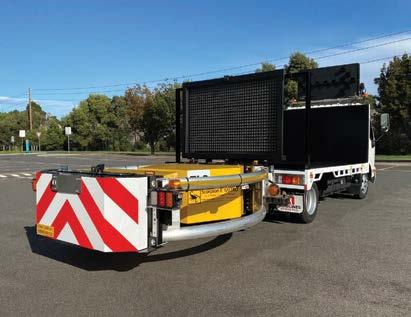

NO RELIANCE ON ROLL-AHEAD DURING AN IMPACT
Rather than relying on some of the impact energy being absorbed by the forward movement of host vehicle on which the TMA is fitted, with ‘Infinity Testing’ the host vehicle is anchored to the ground to prevent any forward movement during an impact.

‘WORST CASE’ SCENARIO TESTING
Compared to standard testing with an unrestrained host vehicle, Infinity Testing is a much tougher testing regimen. It is considered ‘worst-case scenario’ testing which makes it much more difficult to meet the pass criteria for IS values, as all of the Ridedown Acceleration must be provided by the TMA absorbing the energy from the impact.
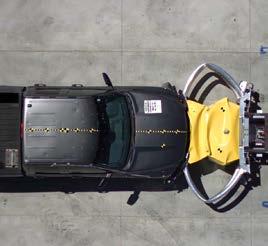
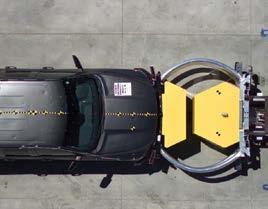
TMA ABSORBS & DISSIPATES 100% OF THE IMPACT ENERGY Testing the TMA on a host vehicle which is anchored in place, tests – and for both the Scorpion II® TL-3 and Scorpion® II METRO® TL-2 TMAs – confirms the capacity of the TMA to absorb/dissipate 100% of the impact energywithout the benefit of the host vehicle roll-ahead.
NO UPPER LIMIT FOR HOST VEHICLES
From a practical standpoint, the fact that both the Scorpion II® TL-3 and Scorpion® II METRO® TL-2 TMAs were successfully tested to MASH Standards using the ‘Infinity Testing’ method, means both units are MASH certified with no upper weight limit for the host vehicle.


www.a1roadlines.com.au
HOW IT’S DONE
With ‘Infinity Testing’ the host vehicle is anchored in place during the impacts to assess the TMA's capacity to absorb/ dissipate 100% of the impact energy without the benefit of roll-ahead.

WHAT ABOUT ROLL-AHEAD DISTANCES?
Importantly, to emulate ‘real world’ operating conditions, both the Scorpion II® TL-3 and Scorpion® II METRO® TL-2 TMA have also been successfully tested and MASH certified using standard ‘non-anchored’ host vehicles, with both units posting impressively low roll-ahead distances.
Scorpion® II TL-3 TMA
Crash Test: MASH Test 2-53
Impacting Vehicle Weight: 2266kg
Impact Angle: 10.3 Degrees Impact Speed: 103.8km/h
Roll-Ahead Distance: 5.1m
Scorpion® II METRO® TL-2 TMA
Crash Test: MASH Test 2-53 Impacting Vehicle Weight: 2295kg
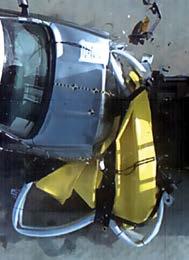



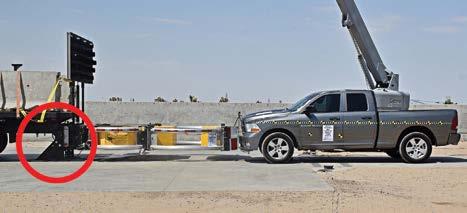
Impact Angle: 9.9 Degrees Impact Speed: 81.6km/h
Roll-Ahead Distance: 12.4m
ULTIMATE
THE EQUIPMENT YOU NEED – THE SERVICE YOU EXPECT A1 Roadlines Pty Ltd | 89 Rushdale Street, Knoxfield, Victoria 3180 P: 1300 217 623 (A1ROAD) | E: sales@a1roadlines.com.au
THE
TEST OF ATTENUATOR PERFORMANCE
Structural Steel Design in Australia over the past 50 years
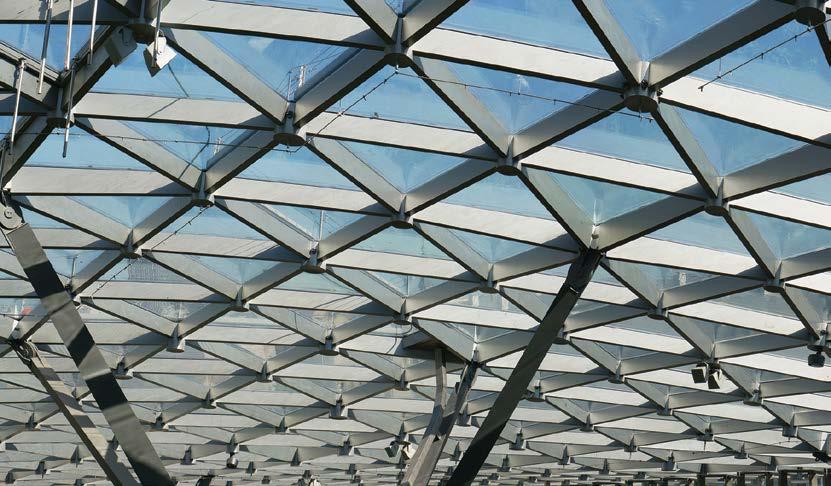 by Paul Uno, Director, ETIA
by Paul Uno, Director, ETIA
Having graduated from the University of Sydney as a civil/structural engineer in the mid 1970’s, I have seen many changes in the structural steel industry over that time. I was fortunate enough to have been lectured by experts in steel such as Nick Trahair, Greg Hancock, Russell Bridge, Michael Rotter and Jack Roderick. The Steel Standard I used at university was AS1250-1972 (working stress) which was then then morphed into AS3990-1993 (for mechanical engineers who use working stress).
I was also fortunate to have worked for the Australian Institute of Steel Construction (AISC) in the mid 1980’s. I have worked & met with some of the influencers of steel design and construction. It included people like Tim Hogan, Arthur Firkins as well as Branko Gorenc, Ron Tinyou and Arun Syam (authors of Steel Designers Handbook). The AISC (Aust) was merged with the SIA (Steel Institute of Australia) in 2002 and rebranded as ASI (Australian Steel Institute) to separate its identity from the AISC (USA).
While I worked for AISC, I was on the Standards committee BD-001 when AS1250 ‘working stress’ was being converted to ‘limit state’. I put forward the idea that the Code number (ie 1250) should be changed to differentiate it from the impending new Standard which would contain significant changes related to limit state design. My
suggestion was met with resistance from other senior & experienced Committee members at the time and I was over-ruled. I then expressed my concerns to my boss (Arthur Firkins), that in years to come if engineers refer to AS1250 they won’t know whether the calculations were done using working stress or limit state. Fortunately he could see the logic and agreed with me. He then put in motion a series of steps (eg personal discussions with the Standards Australia CEO, extracting various clauses out of the Welding Code AS1554 and inserting them into the draft Steel Code, plus other measures) which then gave him justification to nominate a new number for the final document, which then became AS4100. At least today if someone talks about AS1250 they know it was a working stress document vs AS4100 which is a limit state document.
Since 1998 I have conducted many ETIA courses on Structural Steel Design. For many years I would refer to the BHP steel catalogue for section properties of UB’s, UC’s, Angles, Channels etc. However, BHP steel then changed their name to One-Steel and so I referred to the One-Steel catalogue. One-Steel then became Liberty and now it is called Infrabuild. Since steel members produced in Australia have not changed for many years, I still refer to the catalogue of steel section members as the “One-Steel” catalogue.
Designers should be wary of the fact that whilst they may do their design calculations using the One-Steel catalogue, there is a good possibility that the builder gets a better price on imported steel that may not have the exact dimensions and properties of the Australian steel sections.
Fortunately, basic principles of design such as buckling and crushing of members remains the same. That is why in our ETIA “Steel Design Workshops”, I address topics such as Lateral Torsional Buckling (now referred to as Flexural Torsional Buckling), Compact vs Non-Compact (or semi-compact) vs Slender members, Form factors, Shear Centres.
As a design engineer with Transfield (19801984), I did all my calculations by hand, as we did not have desk top computers with prewritten programs. As a result of having to do designs manually I have a sound knowledge of steel design basics.
Once computers started to enter the workforce, I found that after a period of constantly using computer programs, you tend to forget the basic formulas that apply. This is why engineers who attend our 2-day Steel Design Workshops are taught first principles ie the basics, the formulas and so on. All the worked examples and tutorial examples and calculations given to attendees have to be done by hand (to strengthen their understanding and
22 Construction Engineering Australia • Dec 2022/Jan 2023 STRUCTURAL STEEL DESIGN
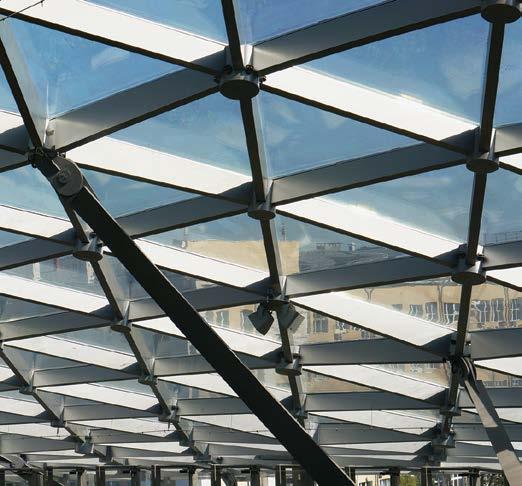



This blog is the latest in a series produced for Construction Engineering Australia by globally respected engineering educator and reinforced concrete specialist, PAUL UNO BE MBdgSc MIE(Aust) CPEng NER RPEQ APEC Engineer IntPE(Aus), Director, ETIA (Engineering Training Institute Australia). accuracy of the designs they are performing). For further information on our structural steel courses, visit www.etia.net.au Note that our first course for 2023 (face to face) will be held at Rydges, Norwest (Baulkham Hills) in Sydney on 1-2 March 2023. WORLD LEADING REBAR MANUFACTURING EQUIPMENT Supporting and supplying to Australasia's leading reinforcing manufacturers for over 40 years. Backed by MEPGroup Italy, Machinery Indents have the structure, experience and advice to help you with rebar processing equipment • New and Used Machine Sales • Factory Layout Design • Programmed Maintenance • On/Offsite MEP Equipment Training • High Automation and Flexibility • Customer Solutions • Manual Handling Solutions • Technical Assistance • Genuine MEPGroup Spare Parts • Highest Quality Machinery • Manufacturing Process Consultation • Precast - Rebar Manufacturing Equipment MEPGroup Australasian Agent 43 Jesica Road, Campbellfield Victoria, Australia P: +61 3 9357 9769 F: +61 3 9357 0699 E: enquiries@mi-mep.com.au www.mi-mep.com.au Construction Engineering Australia • Dec 2022/Jan 2023 23 STRUCTURAL STEEL DESIGN
There is no question that precast concrete has sustainability benefits that deliver construction efficiencies and subsequent profitability gains, over in-situ concrete, blockwork or steel construction.
Precast elements - as opposed to traditional construction methods - are manufactured off-site in factories, and that provides builders with significant advantages.

National Precast's Master Precasters use quality systems that are inherent in their manufacturing processes, resulting in better quality and more reliable delivery of whole elements. The result is safer construction sites, lower waste removal costs and faster construction times... all of which mean fewer materials’ deliveries on site, fewer trades on site and less waste on-site. For the builder and asset owner, faster construction means earlier lockup and handover.
In addition to precast's inherent efficiencies, its advantages can be maximized when twelve engineering design principles are applied both before and during construction.
1. SIMPLIFYING PANEL CONNECTIONS FOR COST SAVINGS
Even though a lot of precast projects require the
manufacture of bespoke, one-off elements, there is usually scope and commercial incentive to use standardised connection details. There are many instances in which special or unusual cast-in items (such as cast-in plates) can be replaced with combinations of smaller plates and/or standard plates.
2. PROGRESSIVELY SELF-SUPPORTING TO MINIMISE TEMPORARY WORKS
There are many factors that can be considered when planning panel interactions and structural connections to minimise the temporary works that will be needed. It is possible, for example, to erect stair and/or lift cores to an impressive height with only a few braces, and then provide lateral stability to other works once they have been connected.
3. USING PRECAST AS FORMWORK TO ELIMINATE THE NEED FOR FORMWORK
In many cases, precast elements can be installed prior to in-situ concrete floors and/or walls being cast. The precast and connections can be carefully detailed by the design engineer to use the precast as formwork.
4. UTILISING A PANEL’S BEAM ACTION FOR STRUCTURAL PERFORMANCE
All materials and components behave structurally even before they are included in a much larger aggregated structure and a precast panel placed on its edge will mobilise beam action, that can be used to improve its behaviour in lifting and handling, as well as in some in-service applications.
5. EQUALISING LOADS DURING LIFTING TO MAXIMINSE LIFTING EFFICIENCY
Precast elements' Center of Gravity (CoG) and the safe distribution of lifting forces between the anchor arrangement and the connected rigging must be considered in a lifting and handling design. With this careful consideration, efficient lifting of the precast element can be achieved at each stage and the lifting positions of the elements can be determined.
6. BETTER SAFETY AND EFFICIENCY BY MINIMISING SHEAR CONNECTIONS
Directly aligned load paths (axial loads in tension or compression) are safer and more efficient than eccentric or unaligned load paths (creating shear and bending effects) and as an example, panels
ENGINEERING: 12 WAYS PRECAST CAN MAXIMISE CONSTRUCTION EFFICIENCY 24 Construction Engineering Australia • Dec 2022/Jan 2023 NATIONAL PRECAST NEWS
CLEVER
across an opening can be better supported by adjacent panels rather than by merely steel shear plates or corbels.
7. USING ALTERNATIVE CONNECTIONS TO MINIMISE ON-SITE WELDING
Quality control and compliance with specifications are notoriously difficult to achieve with welding, and it is possible to reduce or eliminate the requirement for on-site welding by using the many available alternative types of connections.
8. INCORPORATING COMPLETE BASE CONNECTIONS TO ELIMINATE BRACING
It is common for precast wall panels and columns to have grouted base connections, with a grouted base bed and grouted starter bars. It may be possible to reduce or eliminate the need for temporary bracing if the base has enough bending capacity to withstand rotation due to temporary design wind loads or construction loads on the element, once the grout has cured for the minimum period.
9. USING MORE STRUCTURALLY EFFICIENT PANEL REINFORCEMENT TO RESIST BENDING
Panels are usually reinforced with one layer of mesh or bar, positioned in the center (mid-depth). A panel's ability to resist bending when lifted, handled and erected is enhanced when reinforcement is distributed in two layers of lightweight mesh or bar, both top, and bottom. This applies particularly to tall, double-storey height panels and especially when there is a mid-height blockout for an in-situ slab pour.
10. USING PRECAST FLOORING PLANKS FOR LONG SPANS AND FASTER CONSTRUCTION
In construction, utilising precast flooring planks with in-situ topping screed, can provide significant advantages when it comes to achieving long, clear spans, without the need for back-props. By doing this, follow-on trades can start earlier, thereby speeding construction times.
11. DESIGNING PRECAST/PRESTRESSED BEAMS SPECIFICALLY FOR EACH PROJECT
The ability to 'mould' concrete beams into structurally efficient cross-sections allows designers to create beams that meet exact project requirements. This, combined with prestressing, can offer great benefits for both building and infrastructure projects.
12. TOTAL PRECAST STRUCTURES TO MAXIMISE CONSTRUCTION EFFICIENCY
By combining various precast elements in one complete precast structure, not only can construction times be minimised, but also longer spans, higher floor-to-floor dimensions, and more structurally efficient designs can be achieved, all without compromising architectural intent or price.
To access more engineering information from a Master Precaster, visit the National Precast website: www.nationalprecast.com.au There is an extensive range of resources available which have been developed by the vast engineering expertise of its members.

Construction Engineering Australia • Dec 2022/Jan 2023 25 NATIONAL PRECAST NEWS
Its proximity to Paramatta and Sydney’s CBD as well as improving infrastructure amenity are making Granville a very desirable destination for first home buyers. The Granville Place apartment complex is offering affordable residential living that is touted as a premium development in a buzzing neighbourhood.
With construction commencing in 2019, the threeyear, three-tower project was built in planned stages. This meant that towers A and B were operational while tower C was being constructed.
EXTENSIVE USE OF PRECAST
The 9,000 square metre Granville Place makes extensive use of precast concrete and is the latest offering from Shokai Ausbao, the team that developed The Quay Apartments, which revitalised Sydney’s Chinatown. It’s an iconic, eye-catching mixed-use development including 617 one, two and three-bedroom apartments that sit above retail and commercial spaces. There are also five levels of car parking, a mall, a common area and park at ground level and a podium offering a communal play and landscaped area.
Precast was specified for the vertical elements to ensure the highest quality external finish.
Working with Parkview Group, Team 2 Architects, WSP and ADG Engineers, National Precast Master Precaster Advanced Precast was awarded the contract to manufacture the precast elements which included both loadbearing and non-loadbearing walls, columns and balcony ‘picture frames’ for the project. All up, 1,529 different elements were supplied for the project, comprised of 1,029 panels, 237 spandrels, 172 columns and 91 upstands.
FRAMING THE VIEW
The three unique towers each use the precast bays to frame a different outlook. Multiple mould shapes were used during manufacture to both distinguish the frame effect between each tower, as well as the view from one bay to the next.
According to the precaster, the mould complexity and ensuring that junctions of frame intersections were all perfectly aligned during installation, were the key challenges for the project.
TEAM EFFORT AND 3D MODELLING ACHIEVING RESULTS
“Creating the ‘picture frames’ within ‘picture frames’ was a true team effort. 3D modelling was used
to document the project, as well as to create the special moulds that were required to construct the ‘picture frame’ elements,” according to Brett Foster, Advanced’s Operations Manager.
With quality high on the client’s agenda, it is no wonder that Advanced’s precast was chosen. Manufactured in the precaster’s Wetherill Park factory in steel moulds and with extensive quality processes in place, National Precast CEO Sarah Bachmann says the finish that has been achieved is nothing short of exemplary.
“The high quality, plus speed and ease of construction that precast offers projects like these certainly deliver benefits to the client and future inhabitants alike,” she added.


Meanwhile, Parkview’s Project Manager for the development, Peter Lantouris, says that “we consider this project to set the standard for quality in Granville with great attention to detail and high-quality finishes throughout the apartments and lobbies.”
“Granville Place has been delivered on time and offers a superior product which the client is really happy with, and we are confident the owners and users will be happy with it also,” he added.
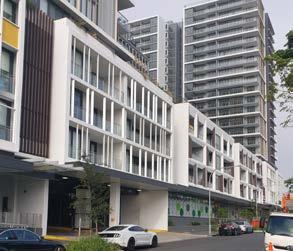
1,529 PRECAST ELEMENTS DELIVERING QUALITY, FORM AND FUNCTION Project: Granville Place Apartments Location: Granville, NSW Master Precaster: Advanced Precast 26 Construction Engineering Australia • Dec 2022/Jan 2023 NATIONAL PRECAST NEWS
HAVING A SAY IN STANDARDS: THE ROLE OF INDUSTRY ASSOCIATIONS
Associations and peak industry bodies typically undertake a broad range of activities like promoting the sector to encourage increased uptake, advocating to authorities, educating, and encouraging collaboration and networking. One of the often-unsung achievements is the inroads that associations make into the review and development of Australian Standards.
In the case of National Precast Concrete Association, this work is done through an experienced and knowledgeable cohort of its members, who represent National Precast on a myriad of precast-related Standards’ committees.
According to National Precast’s CEO Sarah Bachmann, National Precast has active representation on twelve Standards’ committees.
THE INDUSTRY CONTRIBUTION
“Industry makes a huge contribution to Standards. Thanks to the commitment of our members, we are able to provide input to Standards both as they are being developed and reviewed,” Bachmann comments.
Nominating for a standards committee and reporting back to the Association is a rigorous process in National Precast’s case.
According to Bachmann, the Association puts out a call for expressions of interest when specific standards need representation for development or updating. Members nominate suitable individuals, who must agree to a strict set of requirements when they nominate. She says there are benefits all round when members’ employees represent National Precast.
“By making their employees available to do the work that’s needed, our member companies are able to promote their contribution to the betterment of the precast and broader construction industries. It’s being a good corporate citizen, not only via their membership, but by this work. They can also be ahead of the game by knowing what lies ahead.
“It’s also good for staff morale as the individuals feel like they are making a difference to something greater and it looks good on their CV.
“And for us”, continues Bachmann, “we are ensuring that precast manufacturers have a say in decisions that can sometimes have a more academic bent and complement the influence of safety authorities or unions. This balanced approach ensures the most practical and best practice outcomes for the entire industry,” Bachmann comments.
ROBUST SELECTION AND REPORTING PROCESSES
Representative nominations are assessed by the National Precast Board for their suitability based on experience and skills.
Likewise, reporting back to the Association and providing feedback and guidance to the representative, strictly follows a transparent process, to ensure the individual is representing the membership and not his or her own personal views.
“We are also careful to follow Standards Australia’s requirements around committee confidentiality. It’s a delicate balancing process.”
Ms Bachmann says the Association’s members are the experts in the field and are well-versed to provide practical feedback to committees on behalf of the membership
“Of course, we assist with that information gathering process where needed,” she adds.
“We will often act as the go-between the representatives and the membership, to make
sure that safety benchmarks are maintained and continuously improved through the Standards’ network”.
AS 3600 CONCRETE STRUCTURES UNDER REVIEW
At a recent National Precast members’ event, the representative for AS 3600 Concrete structuresGeoff Fletcher from Euro Precast - spoke about the current review of the standard.
Bachmann says BD 002, the Standard’s committee, has since agreed to National Precast’s proposal to revise the precast-relevant material in the Standard and a sub-committee has since been formed and will be chaired by Geoff Fletcher, to review the content.
National Precast has also initiated conversation with David Chandler, the NSW Building Commissioner and Geoff is continuing the conversation around improvements to AS 3600 that are consistent with the work David and his Department are doing.
About National Precast’s BD 002 rep, Geoff Fletcher

Geoff is the in-house engineer at Euro Precast. He is registered in both Victoria and Queensland, where Euro has its factories. Geoff also represents National Precast on BD 111, the committee for ISO/TC 59/SC 19 Prefabricated buildings, and the Australian Steel Institute on BD 066, the committee for AS 3850 Prefabricated concrete elements.
Geoff says his introduction to precast was as a Product Manager for concrete lifting systems at Reid Construction Systems in 2004. Straight away, he was told that engagement with National Precast was a part of his duties. Geoff says this has always been enjoyable & worthwhile - even during a few periods since then, where he withdrew from the industry! Incidentally, Reid is still a very active Industry Partner member of National Precast, and has its own staff representing the industry on Standards’ committees.
According to Geoff, he has long thought that if one is going to be in an association, then giving time and participating is far better than just throwing money at it!
Before his precast career, he came out of the formwork industry and could see then that precast was a market threat, which it remains for in-situ formed concrete. And now for the precast industry, we see new external threats, so it's in the interests of all National Precast members that we collaborate to respond. And besides, he says the National Precast gatherings are a lot of fun!
And as for something more personal about Geoff – he has recently started giving blood again after a 22 year break, since he lived in the UK at the wrong time during the Mad Cow Disease scare, and his donating was banned here in Australia.
Image: ©2022 Andreas Senoner Photography
Construction Engineering Australia • Dec 2022/Jan 2023 27 NATIONAL PRECAST NEWS
Transition Test #1 for 2270kg Ute
Transition Test #2 for 2270kg Ute
Transition Test #1 for 13,000kg Bus
Transition Test #3 for 2270kg Ute
The DOLRE bridge tra c barrier development demonstrates how the incorporation of FEA into the design process can optimise a solution that is vastly di erent from the solutions that traditional Engineering methodologies would produce.
Transition Test #1 for 900kg Sedan



A problem was identified and through the iterative use of FEM combined with Eurocodes for structural analysis a solution was found and optimised that was vastly di erent to the direction that traditional engineering was leading.
Once the bridge barrier design was optimised, the same process was used to assess transition designs to various European roadside barriers in accordance with EN1317 and TR16303-2011 requirements.
Australian authorities required product assessment to Australian bridge standards. Future finite element modelling in accordance with MASH standards and NCHRP179 validation requirements satisfied ASBAP’s analysis for both tra c barrier and transition designs.













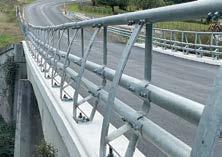
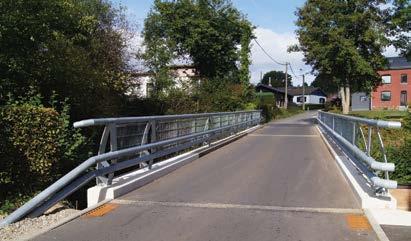









www.lbaustralia.com.au Ph 1300 522 878 • Fully crash tested to European Standards and simulated to US MASH TL4 requirements • Unique design imparting low stress to bridge deck - protecting water proofing membranes and coatings on the deck • Easy to install • Easy to dismantle in times of flood • Cost-e ective bridge rehabilitation solution Ideal for Bridge Refurbishment Projects. ASBAP Approved for use in Australia DISCOVER MORE
A ONCE IN A GENERATION OPPORTUNITY TO ACHIEVE TRANSFORMATIVE OUTCOMES AT SCALE
By Aaron Hudson MAIPM CPPE
We are experiencing a once-in-a-generation opportunity to achieve transformative outcomes at scale from the current global, short-term infrastructure stimulus spend, and project professionals are on the front line. Aaron Hudson MAIPM CPPE looks at how the new wave of infrastructure projects targets transformative outcomes for people and the planet, and why success depends on tenacious project leadership.
Governments worldwide have turned to infrastructure spending to drive economic recovery post-COVID-19. The stimulus packages represent a once-in-a-generation opportunity to achieve significant transformative outcomes with a global impact through the high-calibre delivery of mega-projects and programs.
• US$3.2 trillion: Infrastructure stimulus announced by G20 governments between March 2020 and August 2021 (source: Beyond the Baseline, Jacobs). This includes US$26.3 billion announced in Australia with by far the largest chunk –some 65% – going to the transport sector (source: Global Infrastructure Outlook)
• US$94 trillion: Further investment needed over the next 20 years to meet the forecasted infrastructure deficit (source: Global Infrastructure Outlook)
As project leaders, we’re the custodians of best practice, responsible for delivering the benefits of this once-in-a-generation investment. We need to take charge with a sense of urgency and strong leadership to realise these transformative outcomes.
EXPECTATIONS ARE CHANGING
In the past, project delivery focused on minimising infrastructure development’s impacts, for instance, minimising diversity loss or social dislocation. Now, the expectation is that we derive multiple positive effects throughout project delivery and leave an enduring legacy. The positive social and environmental outcomes are equally important as the economic benefits, with the Australian Institute of Project Management’s (AIPM) recent report with KPMG, The state of project management in Australia 2022, highlighting that 62% of
respondents expect ESG requirements to influence their projects and programs in the future.

BLENDED INFRASTRUCTURE IN ACTION
Brisbane 2032 Olympic and Paralympic Games
Hosting Brisbane 2032 presents an opportunity for Queensland to create legacy outcomes over the next 20 years - 1 0 years before and 1 0 years after the Games. Their plan will drive economic, social, cultural, environmental, and built environment opportunities that ensure lasting benefits before, during and after the Games.
Source: Brisbane 2032 Olympic and Paralympic Games Legacy Plan
30 Construction Engineering Australia • Dec 2022/Jan 2023 SPECIAL REPORT
THE OUTCOMES REQUIRED THROUGH INFRASTRUCTURE ARE EXPANDING
In November 2021, the Global Infrastructure Hub publicly launched the Transformative Outcomes Through Infrastructure initiative. The initiative examined the stimulus spending announcements of G20 countries at the height of the pandemic and the outcomes those investments were targeting.
The GI Hub found that G20 governments are targeting six transformative outcome categories through infrastructure stimulus. These categories are broadly aligned with the United Nations Sustainable Development Goals (UN SDGs).
The GI Hub’s examination found the bulk of infrastructure stimulus already seeks to deliver against at least two of the transformative outcome categories per investment.
However, for infrastructure to realise its full potential and transformative obligations, infrastructure programs and projects must embrace as many, if not all, of these outcomes at every investment opportunity.
Category Overview of transformative outcomes targeted by category Specific transformative outcomes contained in the category
Environmental sustainability and regeneration

Resilience
Enhancing the environment by regenerating ecosystems and biodiversity, maximizing resource recovery, eliminating use of finite resources and becoming carbon positive.
Building the capacity of individuals, communities, institutions, businesses and systems (natural and built) to survive, adapt, grow and thrive no matter what kinds of chronic stresses and acute shocks they experience.
• Circularity
• Environmental regeneration
• Low carbon transition
• Pollution reduction
• Disaster and climate adaptation
• Social cohesion
Inclusivity
Research and Development (Disruptive Innovation)
Digital/ InfraTech
Improving the quality of life and wellbeing of individuals, specifically by reducing inequalities and inequity in all its forms.
Creating new products and services that are more useful and valued, thereby developing an enduring innovation culture.
Achieving rapid technology advancements as a result of infrastructure either scalingup or advancing a new or existing secure (physical, information, operational) infrastructure technology.
• Inclusive mobility
• Digital connectivity
• Affordability and access to services
• Disruptive innovation
• Digitalization
• Cyber security
• Digital connectivity
Economic development
Supporting sustained and diverse growth that drives job creation and a rise in living standards.
• Job creation
• Economic growth
Six categories of transformative outcomes through infrastructure stimulus (source: Beyond the Baseline, Jacobs)
The infrastructure evolution (Source: Beyond the Baseline, Jacobs)
Construction Engineering Australia • Dec 2022/Jan 2023 31 SPECIAL REPORT
WHY THE URGENCY?
While the forecasted investment speaks to a 20-year horizon, there are reasons to believe it may be a limited-time offer. This could translate to a limited window to realise transformative outcomes at the pace and scale currently possible.
As the global COVID-19 pandemic took hold, governments around the world rapidly committed to stimulus initiatives designed to not only drive economic recovery postCOVID-19 but also to make the world more sustainable, resilient, prosperous, and inclusive. The Global Infrastructure Hub estimates this stimulus could represent a 45% increase in the average yearly infrastructure investment across the G20 if spent between 2021 and 2023.
However, we are seeing initial drivers for this spending being progressively overtaken by more recent, and in some parts of the world, just as calamitous events.
Global resource capacities are becoming stretched, and medium-term inflationary and supply chain pressures are significantly impacting project budgets. The desire and political will to spend at the current pace and scale may be eroded just as quickly, as delivery costs mount and returns on investments deteriorate. This increases the need to urgently define and value the return from transformative outcomes as part of infrastructure investment.
The growing global talent shortage further compounds the capacity to achieve transformative outcomes within the available funding period.
We have other reasons to adopt a sense of urgency, the most important being the pressing need to realise the transformative outcomes themselves.
CYBER SECURITY
Cyber security must be considered as a transformative outcome of program delivery. Secure environments can be achieved by addressing physical, information, and operational technology security profiles in an integrated manner.
WELLBEING
Projects are expected to improve individual and community wellbeing. Wellbeing determinants include education, skills, employment, health, housing, income, and quality of and access to the natural environment.
ENVIRONMENT
There is an urgent need to avoid global warming beyond 1.5⁰C (compared to the pre-industrial period) and actively reduce carbon emissions. Every infrastructure project must strive to meet or exceed netzero targets.

THE OPPORTUNITY IS A CHALLENGE FOR LEADERSHIP
Realising transformative outcomes at every investment opportunity is not easy. Our industry has a strong bias towards rewarding cost-efficient delivery over increased benefits. Governments are routinely challenged for overspending on projects, with little question of whether the return on investment compensated for the increased spend, or whether they had met their carbon budget. Commercial project delivery organisations are geared to maximise profits to shareholders, not to maximise benefits on the projects they deliver.
These challenges must be addressed through strong leadership at government, stakeholder, owner, and delivery team levels. We need visionary political, infrastructure, project and community leadership that takes responsibility for achieving transformative outcomes, and steers teams effectively both during and after delivery to create positive, lasting legacies.
As Nick Smallwood, CEO of UK’s Infrastructure and Project Authority, put it in McKinsey’s, Sept 2021 report ‘Delivering sustainable infrastructure: Insights from industry leaders’: “We won’t have a successful project unless a focus on the future impact is at the heart of all our decisions.”
HOW CAN WE DO THIS?
A tricky question, best answered by starting with two much simpler questions:
1. What leadership attributes do current and emerging infrastructure leaders need to lead the charge on realising transformative outcomes through infrastructure?
2. How can leaders acquire these attributes?
Our team at Jacobs explored each of these questions in detail in our recent paper, Beyond the Baseline Part 1: Leading infrastructure teams to deliver transformative outcomes. We outlined several key attributes and abilities that we believe collective infrastructure leadership must possess to instil the culture and behaviours needed to embrace and adopt strategies that will realise transformative outcomes.
“We won’t have a successful project unless a focus on the future impact is at the heart of all our decisions.”
32 Construction Engineering Australia • Dec 2022/Jan 2023 SPECIAL REPORT
We also outlined a few strategies that can be implemented at a jurisdictional/ organisational level and at a program/ project level to help develop these attributes in our people. Committing to developing adaptable and resilient leaders by providing ongoing professional training and development for people is key.
Key attributes and abilities that collective infrastructure leadership must possess:
• Fully appreciate the complicated and dynamic nature of the strategic operating environment
• Have clear values and communicate these values
• Be able to mobilise private capital and partner with an array of potential investors
• Be exceptional at building and leading diverse teams
• Have the experience needed to deliver complex projects

• Have an entrepreneurial spirit
• Be politically astute and able to collaborate across government(s)
• Be excellent communicators
• Implement agile organisational structures with clear plans for resourcing both now and in the future
• Be data and analytics driven
• Be comfortable with disruption and change
• Commit to a learning-based approach
• Create an environment that values and facilitates cooperative relationships with partners.
LET’S SEIZE THE DAY
It’s exciting to be at the forefront of this once-in-a-generation opportunity to achieve transformative outcomes at scale. There is so much opportunity within our grasp, but it will take deliberate effort and strong leadership, acting with urgency to realise it.
We believe the AIPM, and all of us as members, have a significant role to play. As the peak industry body in project management, and as industry professionals, it is incumbent upon us to guide our governments, stakeholders, owners, and delivery teams to take advantage of this once-in-a-generation opportunity.
Aaron Hudson MAIPM CPPE is a member of AIPM and the Asia Pacific Regional Solutions Director for Project and Program Management at Jacobs, which is an AIPM Organisation Member.
AIPM’s newly released annual report, ‘The State of Project Management in Australia’, is based on a survey of the profession conducted with KPMG Australia. The report survey was conducted from July to August 2022 amongst AIPM members with 329 respondents working in project management roles across a range of industries.
Download a copy of the Report at: https://aipm.com.au/ reports/the-state-of-projectmanagement-in-australia-2022/

Construction Engineering Australia • Dec 2022/Jan 2023 33
ADDRESSING THE MENTAL HEALTH IMPERATIVE IN THE CONSTRUCTION INDUSTRY
 By Tom Karemacher, Vice President - Asia-Pacific, Procore Technologies
By Tom Karemacher, Vice President - Asia-Pacific, Procore Technologies

The construction industry is a battlefield, in more ways than one.
In addition to the widely reported rise of Australian and global building companies on the brink of collapse, chronic labour shortages and supply chain issues, the physical dangers of working in the construction industry are having a knock-on effect on the mental wellbeing of workers. With this, business leaders need to ensure they are doing everything they can to support their workforce.
Worryingly, research by Australian College of Applied Professions (ACAP) as part of its Nationally Representative Survey of Australian Workers showed that nearly 50 per cent of Australian employees are afraid to be open about their mental health issues at work for fear of stigmatisation.
Moreover, a new industry poll from Procore found that over half (52 per cent) of Australian construction leaders report losing skilled workers due to higher levels of stress and burnout.
Respondents to Procore’s survey acknowledged the mental health impact of the skills shortage on their workforce, both onsite and in the office — reporting an increase in work health and safety (WH&S)
incidents, including emotional wellbeing cases. 52 per cent of respondents also agreed that the industry needs to improve how injured workers are supported with their mental health.
In response to this growing concern, the industry has adopted more mental healthrelated policies over the past 12 months. More than half (54 per cent) of construction leaders state their business has invested in more mental health resources to support the rising stresses, fears and anxiety of all staff in need.
HOW TO BUILD A WORKPLACE FOR OPTIMUM MENTAL HEALTH
Creating a more open and accepting culture around mental health starts from the top down.
Leadership initiatives must incorporate clear information and guidance that removes the stigma of mental health issues and discourages any lingering attitudes, like the idea that workers should “just toughen up”.
Australian construction companies must establish accessible resources and programs that offer ongoing support and training to all levels of the workforce. This includes adopting a regular check-in philosophy, where communication is a two-way street that promotes compassionate evaluation, the ability to share and understand both sides of the management/employee equation; and, most importantly, an open, non-prejudicial and supportive environment.
The Australian suicide prevention organisation, R U OK? which champions connection through communication, is a step in the right direction. This is confirmed by Harvard Business Review research, which found that almost 40 per cent of global employees were not asked at their company if they were doing okay.
34 Construction Engineering Australia • Dec 2022/Jan 2023 HEALTH MATTERS
Simply put, it costs nothing to inquire about the wellbeing of your colleagues but showing an interest in your people will help to regulate and motivate your organisation’s greatest asset. After all, developing a

EDUCATION LEADS TO INTEGRATION
Mental health, safety and wellbeing measures are all sound initiatives, in theory, but how can leaders and managers put them into practice in a workplace setting?

Providing educational resources is imperative. This is particularly important because a large percentage of workers might not raise their hand for help — for fear of being met with a lack of understanding or made to feel unfounded shame.
Stamping out the stigma of mental illness
LEVERAGING TECHNOLOGY TO IMPROVE WORKER SAFETY



The National Skills Commission’s 2022 Skills Priority List reveals that construction managers rank as the fourth highest indemand skillset across all industries. With 4,984 construction vacancies in Australia, almost half (48 per cent) of respondents to Procore’s poll say they can’t fill the demand for skilled labour to fully staff their worksites. There is no doubt that this increases pressure on other workers, leading to increased levels of burnout across the industry.
But the good news is that Australian construction companies are implementing technology solutions to improve site inductions, training and workplace safety methods.
In 2022, 34 per cent of respondents have a dedicated solution in place to manage safety: an increase of 10 per cent on last year; and 63 per cent of construction businesses are analysing data to predict potential risks, which is more than double the response of 30 per cent in 2021.
Long-term investment in the quality and safety of the global construction industry is a driving force in not only streamlining
 National Mental Health Month help to raise awareness of mental health within the broader Australian community.
National Mental Health Month help to raise awareness of mental health within the broader Australian community.
When it’s photography you need… There’s only one name you need to remember T: 03 9347 9156 E: info@casamento.com.au www.casamento.com.au Specialising in: › Architecture › Infrastructure › Industrial › Events › Portraits › Headshots Construction Engineering Australia • Dec 2022/Jan 2023 35 HEALTH MATTERS
“…developing a psychologically safe workplace depends on creating a sense of belonging and a culture of inclusivity”
So too, the Engineer can use the vast capacity of Finite Element analysis to validate, optimize and adapt data to create the finest design solutions.








www.if3.com.au
Just as Conductors use all the instruments at their disposal to create the finest music...
TECH KEEPING CONSTRUCTION ON-BEAT FOR THE LONG-TERM
By Warren Zietsman, Managing Director of IFS Australia and New Zealand
Despite being notoriously slow in digital adoption, the construction industry has remained remarkably resilient. It has long played a vital part of our local economy, generating $360 billion in revenue – 9 per cent of Australia’s GDP – and employing over 1.1 million workers.
But talk of an economic downturn and energy price hikes now has the industry worried.
The cascading series of local inflation, international sanctions and pandemicrelated disruptions have not only thrown global supply chains and economies into turmoil, but reinforced what we already knew – the construction is facing a reckoning and can no longer lag behind on the adoption of digital innovation.
Spiralling costs and limited resources have made major projects untenable, leaving giant monoliths sitting idle and unfinished across our major cities. With a number of key industry heavyweights experiencing financial difficulties, or worse – administration. Only recently, we saw Lanskey Construction and Probuild enter administration, so this is a very real concern for the industry as a whole.
These challenges have been a catalyst for further technology investment. But there are still a number of obvious barriers – lack of understanding, outdated practices,
technology silos and user behaviours – that limit the effectiveness of the technology to alleviate pressure and stimulate growth.
In uncertain economic times, the inability to achieve digital transformation and integration will be at the detriment of construction companies.
So how do we shift the dial from ‘keeping the lights on’ approaches to a sophisticated, integrated model that span from conception to construction?
right, as well as coordinating with others, is crucial to the balance of success.
So where does end-to-end visibility come in?
By using a combination of IoT sensors to connect the dots and enable cloudbased reporting to create a centralised data hub as a single source of truth, project managers have precise detail of what is happening across the build, providing full visibility of their operations. This enables them to efficiently project manage, compress timelines where required and allocate resources effectively.
ADDING FORESIGHT WITH AI
But what else can the data do? With clean and accurate data now at touching distance to business leaders, how this can be utilised is where advanced enterprise IT architecture takes a leap into the future.

Enter artificial intelligence.
END-TO-END VISIBILITY
Project management in construction is akin to conducting a symphony orchestra – ensuring that your team can work in unison while keeping everyone in time –finding that perfect balance. For things to work correctly, the detail and precision of each section (or team) to both get things
The data captured from the end-to-end systems can create a digital twin, that uses artificial intelligence to map scenarios before they happen. With many builds being multi-year operations, unlocking the ability to plan ahead for any circumstance can transform the once unforeseen into a foreseeably viable solution.
From supply chain disruptions, to fluctuating materials costs – the risks of
“In uncertain economic times, the inability to achieve digital transformation and integration will be at the detriment of construction companies.”
38 Construction Engineering Australia • Dec 2022/Jan 2023 CONSTRUCTION TECHNOLOGY
snowballing into financial catastrophe in construction are a very real threat. It’s clear that domestic onshoring is a short-term fix at best and a far from ideal solution financially. But by harnessing the power of AI-fuelled intelligent data – business leaders can get ahead of the curve to ensure projects can remain both cost-efficient and on time.
KEEPING ASSETS READY
At the heart of construction projects are expensive and highly detailed assets that are critical to any build. Much like an orchestra without its instruments, a construction company without its assets is an ultimately futile proposition.
Downtime on vital assets means inaction, and two weeks out of action can snowball into months of delays, proving costly, inefficient and damaging to a firm’s reputation. Predictive asset management ensures that important components are serviced before they are in need of major repair, allowing for more time in-field and less time out of action.
So, what does this all mean for the construction industry?
It’s a challenging time for the industry, and the ability to deliver projects on time
and within budget is being surpassed by the ability to deliver them at all.
It’s time for construction companies to embrace the future.

Modern IT infrastructure will fast become the foundational framework to which construction companies develop their operational procedures. A sophisticated, integrated model that spans from conception to construction creates connected experiences between people, processes and projects. Those who embrace it will have the competitive advantage to get through these uncertain times.
Like they say, the show must go on.
ABOUT IFS
IFS develops and delivers enterprise software for customers around the world who manufacture and distribute goods, build and maintain assets, and manage service-focused operations. The industry expertise of our people and solutions, together with a commitment to delivering value to every one of our customers, has made IFS a recognised leader and the most recommended supplier in our sector. Our team of 4,000 employees and growing ecosystem of partners support more than 10,000 customers around the world challenge the status quo and realise their competitive advantage. Learn more about how our enterprise software solutions can help your business today.
Warren Zietsman is the Managing Director for IFS Australia and New Zealand. He is responsible for the delivery of modern enterprise systems that create value for IFS’s customers, developing a local business strategy, building its customer base, and expanding the company’s network of quality resellers. With more than 24 years’ experience in the business sector, he is highly adept at building and leading high-growth companies and teams, and developing new markets across APAC, AFRICA and EMEA.

Construction Engineering Australia • Dec 2022/Jan 2023 39 CONSTRUCTION TECHNOLOGY
Exterior cladding solution brings a fresh slant to modern home design
Transforming Australian modern home design and complementing the increasing trend of vertical façades on modern homes, James Hardie has launched their latest innovation, Hardie™ Oblique™ Cladding, a durable fibre cement 14mm shiplap board with wide grooves and angled edges. Offering a point of difference, it is the only Hardie™ exterior cladding product with a slanted groove edge that mixes shadows and highlights, providing interest and depth.
Produced in 200mm or 300mm widths with 175mm and 275mm groove spacing, the two board widths and groove spacing options of Hardie™ Oblique™ Cladding present design versatility with multiple installation options and bespoke groove combinations possible. These include the simple repetition of one width to an alternating rhythm, or an artful staggered combination of two widths, delivering a fresh, contemporary aesthetic.
Improving jobsite efficiency, Hardie™ Oblique™ Cladding does not require specialist



installers, reducing the number of trades on site, while the new Hardie™ Castellated Batten method makes vertical installation and bespoke arrangements of Hardie™ Oblique™ Cladding straightforward. The horizontal castellated battens are an easier, more cost-effective way to do vertical installation than with metal top hats behind every joint.
When used vertically, the new cladding style helps create fresh designs and signature looks to excite homeowners. Two separate panel lengths make vertical installation efficient and can help to reduce wastage. The 2750mm panel lengths suit common wall heights, while the 4200mm length gives tall walls a continuous look.

Bringing modern design to life with its wide grooves and bespoke design flexibility, Hardie™ Oblique™ Cladding is perfect for re-cladding existing homes or using from the ground up for a new build or renovation. Being similar in appearance to standing seam metal cladding,
the easy-to-install fibre cement shiplap boards represent a durable, high-value alternative.
Hardie™ Oblique™ Cladding won’t warp or split like conventional timber cladding can, no matter how dark the colour.

Made with Hardie™ fibre cement, it will stay looking good. It is rot resistant and resistant to damage from moisture and is engineered to stand up to harsh Australian conditions, including coastal conditions.
Fire Resistant, it can also be used as part of a Hardie™ Smart Fire and Acoustic Wall System, achieving a fire resistance level (FRL) of up to 60 minutes CodeMark certification (which independently verifies that the product when installed in accordance with the requirements of the installation guide, complies with the relevant requirements of the NCC).
For more information, visit: https://www.jameshardie.com.au/ productrange/hardie-oblique-cladding

YES! I wish to receive a print subscription to Please find enclosed my cheque/money order for $______ Payable to Editorial and Publishing Consultants Pty Ltd OR please charge my o Mastercard o Visa o Amex Card Number : __ __ __ __ __ __ __ __ __ __ __ __ __ __ __ __ Cardholder Name: Expir y Date: __ __ / __ __ Signature: Name: Job Title: Company: Address: Suburb/Town: ______________________ Post Code: Phone: ___________________________ Fax: Email: _____________________________________________________________ SUBSCRIBE SUBSCRIBE CONSTRUCTION ENGINEERING AUSTRALIA Within Australia ( $77.00 - 1 year, 6 issues o $135.00 - 2 years, 12 issues o $195.00 - 3 years, 18 issues Overseas R ates Asia Pacific o $AUD 120.00 - 1 year, 6 issues o $AUD 210.00 - 2 years, 12 issues o $AUD 295.00 - 3 years, 18 issues All other countries o $AUD 145.00 - 1 year, 6 issues o $AUD 255.00 - 2 years, 12 issues o $AUD 365.00 - 3 years, 18 issues prices include GST) o Editorial and Publishing Consultants Pty Ltd ABN 85 007 693 138 , Broadford, VIC 3658
372 476) • Int’l: +61 3 5784 2210 • Email: subs@epcgroup.com • • PO Box 510
Telephone: 1300 EPCGROUP (1300
40 Construction Engineering Australia • Dec 2022/Jan 2023 PRODUCT BRIEF


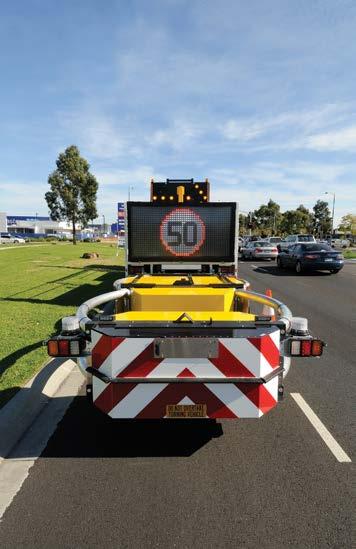












QUALITY EQUIPMENT SUPPORT SERVICE Whatever your line marking or tra c management requirements, A1 Roadlines has the equipment and expertise to meet your needs. THE EQUIPMENT YOU NEED – THE SERVICE YOU EXPECT A1 Roadlines Pty Ltd | 89 Rushdale Street, Knoxfield, Victoria 3180 | www.a1roadlines.com.au P: 1300 217 623 (A1ROAD) | F: (03) 9765 9499 | E: sales@a1roadlines.com.au
Choosing ‘the most sustainable’ construction steels can be a challenge, thanks to the variety of methods used to measure ‘sustainability’. That, and the fact that many products are either self-assessed or assessed against environmental management systems rather than product certification.



ACRS’ SCS (Sustainable Constructional Steels) Certification ensures that construction steels entering Australia and New Zealand from anywhere in the world meet the highest global environmental, social and ethical standards, using independent certification of ESG criteria and performance indicatorswith the added benefit of traceability from source to site. ACRS - Independent, Expert Third Party Certification and Verification of Reinforcing, Prestressing and Structural Steels for Compliance with Australian and New Zealand Standards
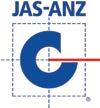
www.steelcertification.com Ph: (02) 9965 7216 E: info@steelcertification.com ABN: 40 096 692 545 ACRS SCS Certification Certified Sustainability from Source to Site



































































































 by Paul Uno, Director, ETIA
by Paul Uno, Director, ETIA


































 By Tom Karemacher, Vice President - Asia-Pacific, Procore Technologies
By Tom Karemacher, Vice President - Asia-Pacific, Procore Technologies






 National Mental Health Month help to raise awareness of mental health within the broader Australian community.
National Mental Health Month help to raise awareness of mental health within the broader Australian community.































